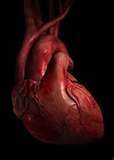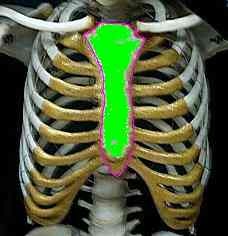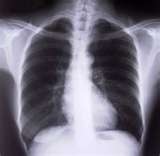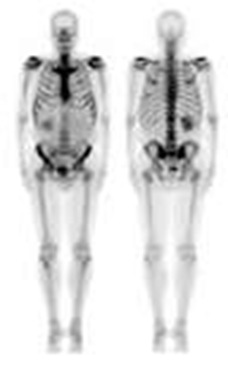Who gets to make a diagnosis? Do I have the authority? Who would believe me?
Martin’s story starts on December 28th, on a snowboarding vacation. He was a slender 18 at the time, healthy, athletic, and an avid snowboarder. He spent the first week in Idaho, and called me near the end of his second week of vacation, in Colorado. He had a fever of 102, had a really sore throat, and had been sick for a couple of days. Today he was much worse, and had vomited twice so far.
It was winter, he was staying with a big group of people, and he had different kinds of symptoms. Strep throat can cause sore throat and fever, but doesn’t usually cause vomiting. I suspected the flu. I told him to make sure he had lots of sips of clear fluid, and call again if he got worse in any way. He was scheduled to return home tomorrow, on the weekend, and I told him that if he wasn’t better, I would see him right away.
In the office, he told his story. He started getting sick about 9 days before. His first symptoms were fatigue and nausea. He vomited once that day and had no appetite. From that evening a week and a half ago, he has had a fever up to 103. He’s had muscle aches and backache. Then the rash appeared. It’s not itchy, but it kind of hurt a little when touched and gave him a strange sensation he couldn’t describe. As I questioned him about every possible part of his body, he recalled that it hurt just a little to pee from the beginning of the illness. Over the previous 24 hours or so, it’s been hurting to pee more consistently, though he was sure there was nothing unusual leaking out of there. He’s vomited once or twice a day, but hasn’t had diarrhea. He wonders about a curious thing that he doesn’t think is related. He last weighed himself about a month ago; in my office that day, the scale showed that he had lost 10 pounds. I asked him about everything he did and everyone he was with. I asked him again about every part of him, from his scalp to his toes.
He looked thin and tired. It would be a thorough exam and I asked him to put on a gown but leave on his shorts. His eyes were a little pink and had a hint of crust on the eyelashes. He had denied any eye symptoms. His nose was stuffy and there were flakes of dried blood I could see when I looked in there. He hadn’t mentioned that, either. His abdominal exam was normal, but I noticed something that he said he hadn’t. On his undershorts, there was a little dark brown stain that looked like a dried drop of blood. His skin rash was very faint but I could just barely feel it. It covered his arms like a delicate pink lace all the way from shoulders to hands.
I sent him to the lab for blood and urine testing, and started him on antibiotics.
The next day I saw him again. He had called and said that over the last 24 hours he has gradually developed joint pain. By the way, he added, he cannot straighten his arms.
I ordered more tests, and x-rays of his elbows.
By January 4, both ankles were swollen. Not his feet, not his legs, just his ankles. Even short walks caused intense pain in both ankles. It didn’t hurt to pee any more. He had some diarrhea. The following day his right eye started to hurt whenever he looked upward. I pushed appointments aside and made phone calls. I was able to convince a busy local ophthalmologist to see him right away, and an orthopedic surgeon to examine his joints, and perhaps put a needle in one of them to draw off some fluid for analysis.
Every night, I was driving to the medical library at UCSF.  One by one, I eliminated the likely diagnoses and most of the unlikely ones. There was one that kept fitting in: Reiter’s Syndrome. One of the older reference books I found had this mnemonic: ‘The patient can’t see, can’t pee, can’t bend a knee.’ I learned that it is most common in young white men, like Martin.
One by one, I eliminated the likely diagnoses and most of the unlikely ones. There was one that kept fitting in: Reiter’s Syndrome. One of the older reference books I found had this mnemonic: ‘The patient can’t see, can’t pee, can’t bend a knee.’ I learned that it is most common in young white men, like Martin.
I saw him again on January 8th. He said that sometimes his right eye ‘doesn’t work’ and the lid is mostly closed. He has to open the lid using his hand. His fever was gone now, and he felt generally better. His elbows were better and his ankles no longer swollen but still painful. He noticed some bumps today under the skin of both his hands. The bumps I felt were like firm BBs under the skin on the tendons of his hands and the back of the wrist.
As a pediatrician, I hadn’t seen or heard of Reiter’s Syndrome since medical school, and it had not naturally come to mind. But then, suddenly, the bumps under the skin. Martin mentioned a sore throat at the very beginning of the story. When I did my residency in Utah, I learned that though it’s quite rare in the United States, the Rocky Mountain states have the highest incidence of rheumatic fever in the country. No one understands why. This brought on a new surge of investigation and laboratory testing. Among others, I tested him for evidence of a past Strep infection. That was positive.
Rheumatic fever is a complication of Strep Throat infections. To diagnose it, the patient needs to have 2 of these 5 criteria:
- arthritis of joints that seems to move from one joint to another
- nodules under the skin
- a long-lasting red rash that usually begins on the arms
- uncontrollable muscle movements
- inflammation of the heart
Martin had 3 of the 5, plus a couple of other things, considered minor criteria for this diagnosis:
- fever
- raised inflammation factors in his blood
- raised infection-fighting cells in his blood
- evidence of strep infection
He had started to get sick on a visit to the Rockies. Rheumatic fever can cause permanent damage to heart valves, so I arranged an urgent echocardiogram, which was normal.
So this is what he had, right? Well, that eye trouble didn’t fit in just right. And what about that pain when he peed? That’s not on the menu for rheumatic fever.
Reiter’s syndrome is diagnosed by meeting 3 criteria, called the ‘clinical triad’:
- arthritis of multiple joints
- urethritis
- conjunctivitis
Martin had all of those.
Rheumatic Fever can be serious when it causes permanent damage to the heart. Knowing Martin’s heart was OK reassures me that if that’s what he had, it shouldn’t bother him any more.
Reiter’s Syndrome is a little more mysterious, and there are reports that some people who have had this have recurring arthritis.
If I really get to make the diagnosis, maybe he had both at the same time. He seems to be better now.












